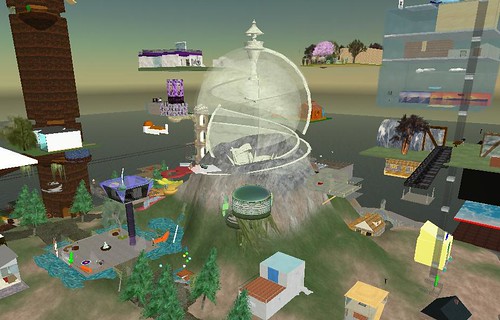Online Worlds are consolidating and emerging in the real world, many and many layers of 3d online cities are popping up everywhere. Today, using google map I discovered that online territories are big enough to compete with the San Francisco Bay, and I hypothesized that the whole Second Life world could start to rise up in the Pacific Ocean.
Second Life has now reached 1800 sq.km: this means that is greater than the city area of Los Angeles (1,290 sq.km.).
You can imagine bridges, which connect the Bay with the extended archipelago of Second Life, allowing you to reach the main islands.
The online worlds grow and evolve, transform what they touch and begin to occupy wider and wider extensions, (hypothetically) unlimited, entering into competition with the physical limited spaces of our planet.
When will the amount of the extensions of these online territories overcome the earth ones?
Scaling method
I started from the Gmap and I put the Ruler to 10Km (or 5 mi). We know that the base of an SL island is 256 meters. Four Islands are around 1 Km. I scaled down the SL map using this references.
😉
Inspired by this articles:
http://nwn.blogs.com/nwn/2009/01/second-life-larger-than-world-of-warcraft-there-oahu-combined.html
http://virtualunderworld.net/wordpress/?p=534
Thanks to:
@slhamlet @bluescurissimo @dedaluke ArianeB GoogleMap MappaNovus Hublog


